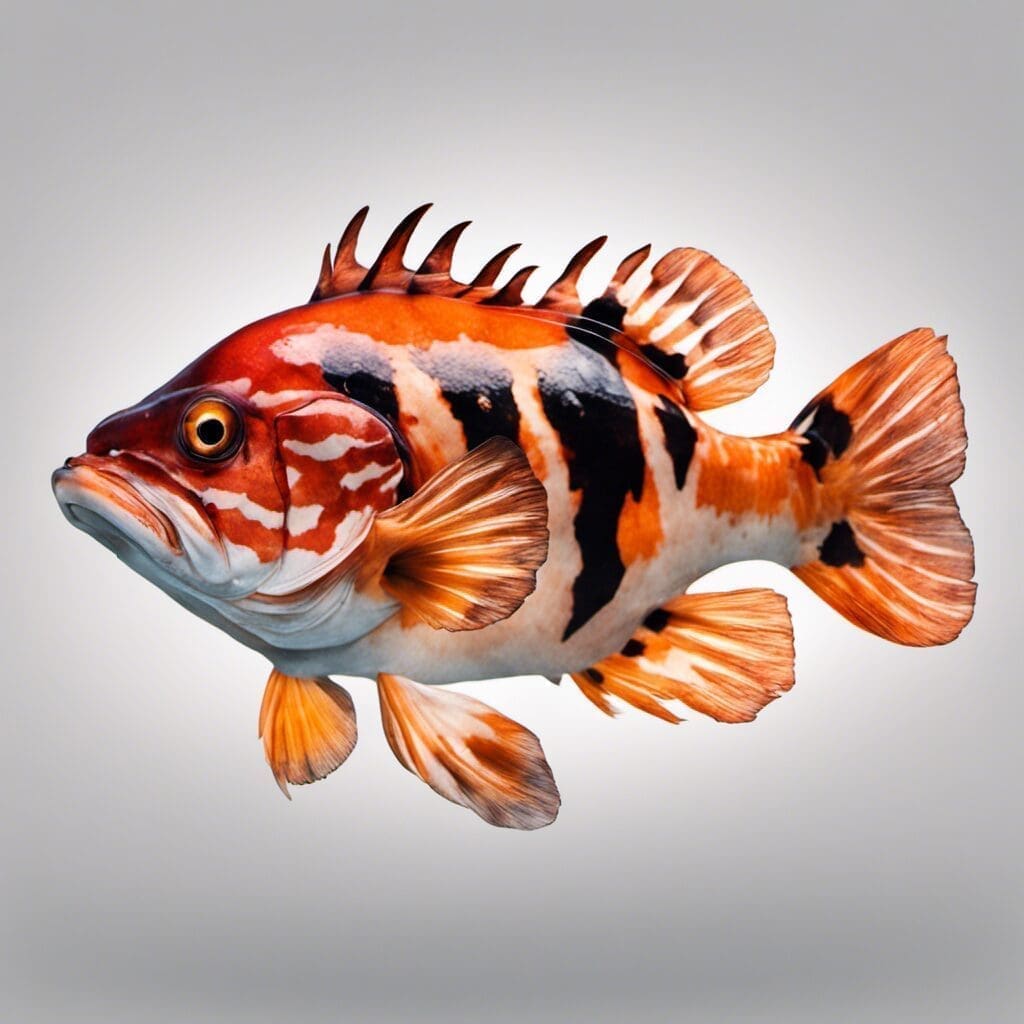Introduction
The Harlequin Rockfish, scientifically known as Sebastes variegatus, is a species of rockfish belonging to the family Scorpaenidae. The fish is well known for its vibrant coloration that includes shades of orange, pink, and purple. Juveniles tend to exhibit more vivid colors as compared to adults.
Conservation Status
The Harlequin Rockfish is currently listed as Least Concern on the International Union for Conservation of Nature’s (IUCN) Red List, given its wide distribution and relatively abundant populations. There are no specific conservation efforts for the rockfish, although they are protected indirectly through the management of commercial fisheries in some areas.
Statistics
| Average | Range | |
|---|---|---|
| Length | 36 cm | 30 – 45 cm |
| Weight | 2 kg | 1.5 – 3 kg |
| Lifespan | 80 years |
Distribution
The Harlequin Rockfish is most commonly found in the North Pacific, stretching from Japan to the eastern Aleutian Islands in Alaska. It does not exhibit any distinct migration patterns.
Habitats
- Water type: Saltwater
- Depth range: 50 – 400 meters
- Temperature range: Prefers cooler, temperate waters
When and Where to See
While present throughout the year, Harlequin Rockfish are most visible during the spring and summer months when they move closer to shore. They are primarily nocturnal, making dusk and dawn the best times to catch a glimpse of these beautiful creatures.
Best Fishing Locations
Some of the best locations for fishing Harlequin Rockfish include:
- Prince William Sound, Alaska
- Kenai Fjords, Alaska
- Hokkaido, Japan
- Sakhalin Island, Russia
If no specific locations are known, look for rocky reefs and drop-offs in temperate, saltwater regions at a depth of 50 – 400 meters.
How to Catch
Harlequin Rockfish can be caught using a variety of techniques including jigging, trolling and bottom fishing. The preferred bait is octopus, but the fish will also respond to artificial jigs and lures. The best time to catch them is at night or in the early morning hours when they are most active.
Identification Guide
Harlequin Rockfish are characterized by their vibrant coloration, which includes shades of orange, pink, and purple. Adults have horizontal stripes running from their gills to their tails, while juveniles exhibit more attractive spots. They also have prominent dorsal spines.
Culinary
Harlequin Rockfish has a firm, white flesh that is sweet and mild in flavor. It can be pan-fried, steamed or grilled with a bit of lemon and spices. Its nutritional information is comparable to other fish, being high in protein and low in fat.
Additional Information
The Harlequin Rockfish – a solitary species by nature – feeds primarily on smaller fish and invertebrates. It has a few natural predators, with the main threats coming from larger fish and birds. While there are no specific myths or historical events associated with the Harlequin Rockfish, it is often revered by fishermen for its colorful appearance and long lifespan.
References and Further Reading
- Alaska Seafood
- Fisheries and Oceans Canada
- Fisheries Bulletin

